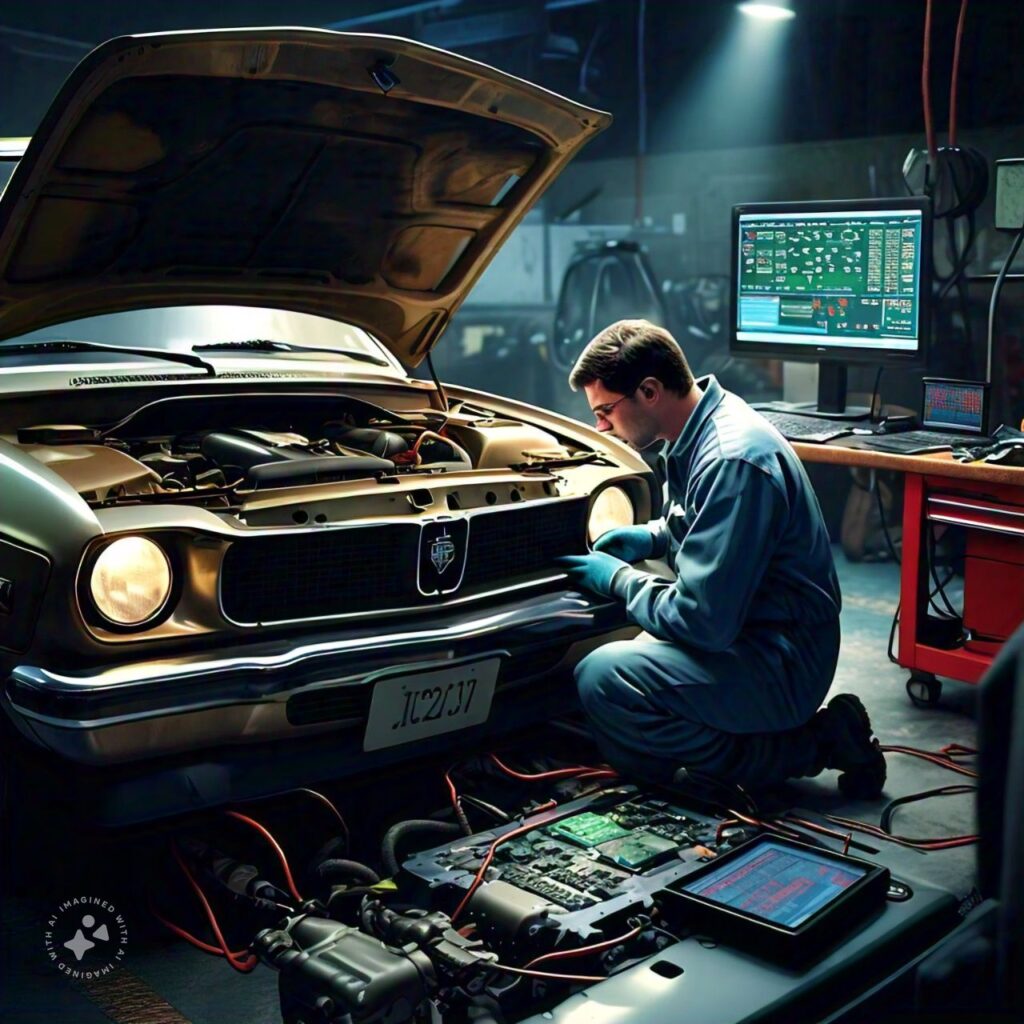Navigating the world of used cars can be like stepping into a mystery novel. Some cars are hidden gems, while others hide their shady pasts under a polished exterior. Before you call in the pros for a detailed Ride check used car inspection, here’s how you can play detective and spot the obvious clues that tell you whether you’re looking at a potential star or a costly black hole.
1. The Tale of the Exterior
Begin your investigation or Used Car Inspection in broad daylight; the truth is easier to spot under the bright sun. Circle the car like a hawk, eyeing the paint for any mismatched shades or overspray that might whisper tales of past accidents. Hunt down rust that might be eating away beneath beauty, and scrutinise dents or scratches that could foretell expensive future surgeries. Tyres tell tales, too—uneven wear might speak of misaligned wheels, a silent ailment that only grows worse with time.
2. Under the Hood: A Peek into the Heart
Lift the hood with the caution of uncovering a secret. Here lies the heart of your beast. Beware of leaks, as they are the tears of a car, often cried from abuse or age. Spy on the hoses and belts for any signs of imminent betrayal. The oil’s condition can reveal a lot about the car’s health; gritty oil is like finding questionable bloodwork results.
3. Inside Stories: The Interior Check
Inside the car, every worn seat or sticky button has a story to tell. Engage every gadget, twist every knob, and flick every switch. If something doesn’t feel right, it might not be. The scent of the car can be a strong lead, too—musty smells could mean unwanted adventures in waterlogged territories.
4. Fluids: The Lifeblood of the Car
Your DIY check should include a dive into the fluids—a car’s lifeblood. Each reservoir should be full and clean. Murky fluids are harbingers of neglect, and low levels might suggest a car that’s been sweating more than it should.
5. Suspension and Brakes: The Hidden Dance
Give each corner of the car a good nudge and watch how it dances. More than one bounce can reveal a tale of worn shocks and tired springs. On your test drive, listen to the brakes—they should whisper, not scream. A groaning brake can be a cry for help, pleading for new pads or rotors.
6. Lights and Electronics: The Spark of Life
Imagine the car’s electrical system as the pulse of a city, with signals and switches akin to streetlights and power lines. Begin your electrical exploration by activating every light and signalling device. As you toggle the headlights, blinkers, and brake lights, observe for any dimness or delays — these could hint at underlying dramas in the car’s electrical grid. Inside, the dashboard should perform a quick light show upon ignition before settling into a calm state; any lingering lights, especially the check engine icon, could be whispering secrets of internal disorders.
Venture further into the car’s electronic soul by testing the power windows, automatic seats, and the sunroof. Each should dance to your commands without hesitation. A stereo that crackles or a window that groans while closing might hint at ageing circuits or weakening motors, all whispering tales of potential future expenditures.
7. The Test Drive: Listening to the Car’s Story
Taking the car for a spin is akin to a first date: it’s all about communication and first impressions. Notice how the car greets you; a smooth start is a good sign, while a hesitant ignition could be a preamble to a rocky relationship. As you cruise, listen to the engine’s song — a smooth hum suggests harmony, while any sputters or pops could indicate underlying troubles. Feel the rhythm of the transmission as you accelerate; jarring movements are signs of mechanical discord.
The symphony continues with the brakes — they should whisper rather than screech. Steering should feel like a confident handshake — firm and precise. Any looseness or wandering is akin to a dubious glance, suggesting hidden stories within the car’s framework that might need professional interpretation.
8. Sniffing Out the Truth
Engage your nose in the investigative process — it’s your direct line to the car’s unseen issues. A sweet, antifreeze scent is like an overly sugary perfume, potentially masking overheating issues akin to a fever. The whiff of burning oil is as alarming as smelling smoke in a forest, a likely indicator of oil leaks kissing hot engine parts.
Inside the cabin, a musty odour doesn’t just smell of adventure; it could signify past floods or leaks, hinting at a saga of hidden moulds. As you round off your Used Car Inspection, a glance at the exhaust’s breath can reveal much: white smoke is the car crying coolant tears, a possible tragic tale of a blown head gasket, while blue smoke suggests it’s burning its vitality (oil), possibly hinting at ageing internal seals or rings. Each scent and sign is a chapter in the car’s life, telling tales of its past and predicting its reliability in the future.
9. The Paper Trail: A Journey Through History
Before you get too emotionally invested, take a detective-like approach to the car’s paper trail. The service records, maintenance logs, and previous owner’s notes are like an ancient manuscript that reveals the true story of the vehicle’s past. Check for consistent service dates and thorough entries—gaps or sketchy details can be as telling as missing pages in a mystery novel. This document dive is an essential chapter in the used car inspection narrative, offering clues to the car’s well-being and care under previous custodians. Discrepancies here could hint at chapters in the car’s history that someone might prefer to remain unread.
10. The Code Reader Chronicles: Unveiling the Digital Secrets
In the modern age of used car inspections, a portable OBD-II (On-Board Diagnostics) code reader is your digital magnifying glass. Plug it into the car to pull up any error codes that the vehicle’s brain might be storing. These codes can from emissions problems to issues with the engine or transmission. Interpreting these codes might reveal more about the car’s current state than any physical clue could. Consider this tool as your ally in decrypting the digital whispers of the car, ensuring your used car inspection uncovers every possible secret tucked away in its electronic folds.
By playing the role of a detective in your initial used car inspection with RideCheck, you not only uncover the mysteries hidden beneath polished exteriors but also save yourself from potential heartache and financial misadventure. When you’ve done your sleuthing and you’re ready to zero in on a suspect, call in the professional inspectors to bring the full truth to light. Happy hunting, and may your investigations lead you to the gem among the stones!





